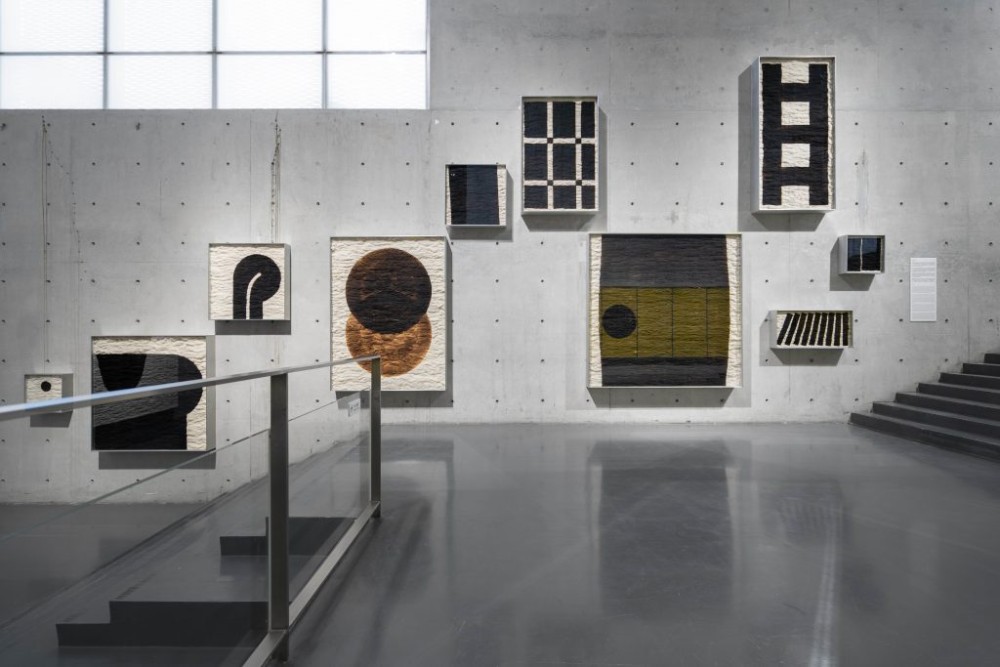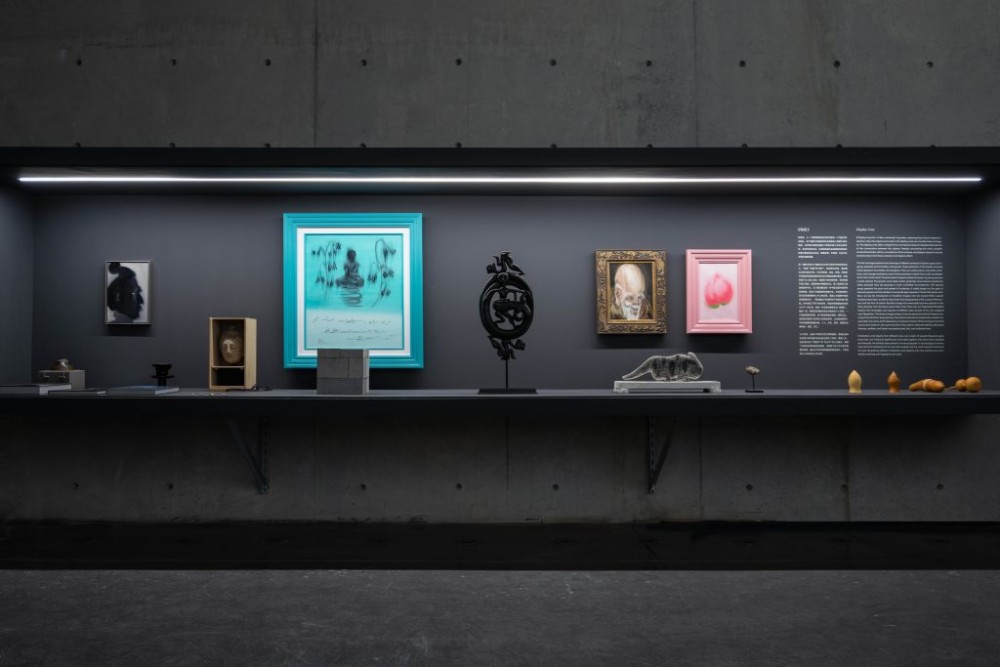Artist Zhao Zhao's symbolic journey to his solo exhibition
Mar 16, 2022
Zhao Zhao has come a long way from his humble beginnings in Xinjiang, China, to his current status as an internationally acclaimed artist. He takes Zaneta Cheng and Stephenie Gee on a symbolic journey from the Jurassic period through to modern-day New York by way of his latest solo exhibition

Regarded as one of the most promising contemporary artists to come out of 1980s China, Zhao Zhao has garnered international attention with his bold and radical works presented at institutions such as New York’s MoMA PS1, Kiev’s Pinchuk Art Centre, Berlin’s Museum of Asian Art, Hong Kong’s M+ and many more.
Renowned for breaking barriers and crossing time and space to connect history with new trends in our current reality, the Beijing- and Los Angeles-based artist is now being showcased in a solo exhibition curated by Cui Cancan at Long Museum West Bund in Shanghai. Zhao Zhao brings together different periods of civilisation through works such as Constellation, “a portrait of time and space”, his Sky series that captures the sky of different countries, and Display Case, a collection of inspirations that reveal the development of the artist’s ideas.

At your solo show in the Long Museum, you’re exhibiting your most important works from the last few years. Central to the exhibition are three display cases filled with a range of objects. Can you talk us through this section? What was your process and thinking behind curating these objects?
Display Case is a series of works. Display Case No. 1 displays an arm with tattoos of symbols from the Hongshan culture, “Self-Portrait” and “Father and Son”, a gilded Buddha and one of my early leaning sculptures, a 5,000-year-old jade disc and a similarly shaped disc of Pu’er tea, a jade annulus installation and a sketch of a tower of jade discs, Eastern jade cong vessels and Western industrial screws, which unintentionally have shapes likewise. Jade cicada and carved jade earbuds, a lighter and Vajra relic, “One Second” and a centimetre of hair, and the juxtaposition of “Constellations” and “Fragments”. Also, the fossil specimens from the Jurassic period.
Display Case No. 2 are more like three montages. The first group is “Grandpa”, “Peach” and “Gourd”. The second group is a series of sculptures. “Heavenly Gate” – a coiled dragon and a carved jade tiger – a representation of early Chinese sculptures. They both depict the process of a vanished tribal text. The third group are the Bodhisattva from the Tang Dynasty and “Repetition”, composed of cut-off fragments of Buddha statues. Finally, a “Jianzhan” and the “Jianzhan” book series.
When these objects from different ages appear side by side, the history and craftsmanship of each is naturally revealed and a new language is formed. This language is the clue to my thinking. These clues include fossils from 100 million years ago and instant noodles familiar to everyone today, jade from the cultural period and screws that represent industrial civilisation. These are the physical evidence of my understanding of the world, which is also the material for me to weave this world.
Also see: 6 Korean celebrities who have entered the NFT world
Is this the first time in a show that you’re exhibiting a personal collection? How do these objects inspire you? Can you pick out one to talk about its significance more?
This is not the first time they have been exhibited, and they do not appear in the case as “collector’s items”. This is a regular and complete series of works called Display Case, which, for me, is like a language. It contains ancient times, civilisation, craftsmanship, cosmology, the development of human technology, and the extraction of ancient and contemporary. In the Display Case, you will see different feelings, both personal and social, human civilisation and the endless imagination of the universe.
For example, the case shows a fossil from the Jurassic period and a centimetre of my hair. They are all significant to me. We found a fossil that adds a time to the evolution of human civilisation: 100 million years, which is a testimony to the human concept of the universe. We begin to rethink who we are. What have we experienced? And what is beyond the future? Then this concept of time becomes very important.

Many of your works investigate materials and their ties to certain histories and locations. For example, cotton, asphalt, ladders. What draws you to working with these unconventional mediums?
These mediums have a significant relationship to my experiences growing up. For example, cotton is related to the labour of picking cotton that I was involved in when I was a student. In Xinjiang, where I grew up, there are little-known historical events behind these materials, such as oil and asphalt. These materials have a special meaning to me because when I went out of Xinjiang to Beijing, Europe and New York, I realised that they are essential elements in the functioning of the world, a symbol of civilization and a trigger for war.
Can you tell us about your interest in different histories, times and places? What is your research or thought process like?
I have been following the Paleolithic and Neolithic periods on the Chinese landscape, the emergence of jade and its evolution, and the Song dynasty porcelain Jian Yao. The former is 99% natural and 1% artificial which goes to 99% artificial and 1% natural – this is a fantastic creation.
Also see: The family legacy of furniture designer Pierre Paulin
Who are your biggest influences?
The unknown of nature and real-life experiences. These are enough.
Cui Cancan has worked on several of your exhibitions. What’s your relationship like with the curator?
We are both very concentrated on our works, and we always meet each other with a recorder and notebook to discuss the upcoming exhibition. During this comprehensive exhibition period, it’s essential to have routine and regular coordination with the curator to discuss our works and topics further. The curator needs to write articles and documents. Therefore, the curator must know me well and be able to cooperate over the long term.
Constellations opens the show, which is based on a car accident you experienced. How much of your work is autobiographical?
All my works are autobiographical. I will start from my perceptions and experiences. I will not work on things I have never experienced or are irrelevant to me.

In Extremis is the final work one encounters in the gallery, and it’s like an immersive experience, covering the entire floor and reflecting light onto the curved ceilings. This is quite a different presentation to the In Extremis at Hong Kong Art Basel 2019. How do you hope the audience interacts with this piece?
It’s enough for me if the audience just stands there.
How did your collaboration with Louis Vuitton change your views of In Extremis?
It didn’t actually change my view. Whenever I look at it, it’s always solemn, beautiful and sorrowful.
For those who are familiar with your work as an artist, what new perspectives or ideas might they come away with from this exhibition?
Everyone has their own opinions and perceptions. I don’t know how they imagine or what emotions they feel, but I hope that they’re able to see the amount of effort we have put into this exhibition.
Who is your #legend?
The universe.
Also see: Tom Friedman’s interpretation of art as a break from hyperspeed lifestyles





























